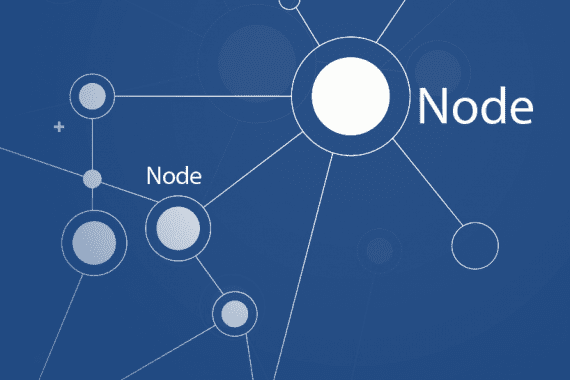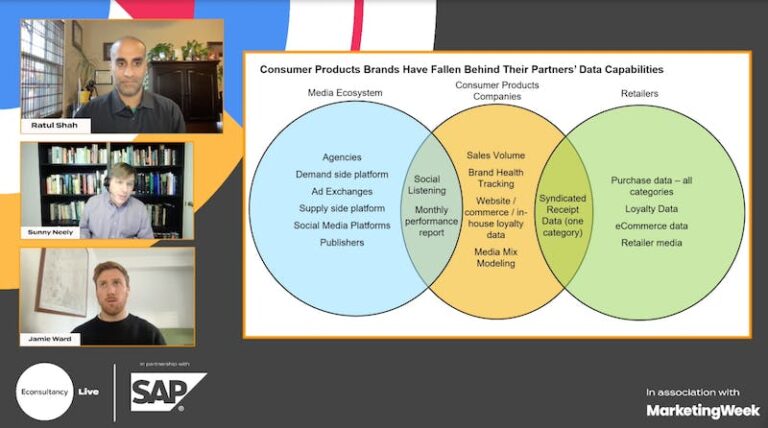Think of it like this. It is difficult to compete with Amazon because it has reached critical mass. There is such an abundance of buyers and sellers that it is hard for consumers to resist.
The marketplace becomes stronger when a brand adds products to it, creating a little more variety and a few more reasons for a shopper to buy.
“The critical mass of a network refers to the point at which the value produced by the network exceeds the value of the product itself and competing products. This can happen at different times depending on the type of a network,” wrote James Currier, General Partner at NFX, an early-stage venture capital firm.
A network incorporates nodes and links. Nodes are buyers and sellers in two-sided marketplaces such as Amazon, eBay, and Etsy.
The network effect’s natural enemy is congestion. It happens when adding new nodes slows the network down or makes it less efficient. A marketplace loses value and utility when congestion is present.
Business and Math
The “network effect” refers to a customer or user who adds value to a product or service. Network effects made Etsy, eBay, and Amazon successful, and they can work for emerging ecommerce marketplaces, too.
The need for critical mass is a challenge for a new marketplace. It needs a pool of buyers to get sellers to list products. But buyers need something to purchase.

Think about how you would make it dense. How could you connect buyers and sellers? Are there other potential nodes? For example, what about a B2B marketplace that includes logistics companies who bid on deliveries in real-time as buyers and sellers close deals? This arrangement might be particularly dense.
A marketplace grows dramatically when it achieves critical mass for a network effect. Suddenly, there is no stopping it.
The benefits found in network effects, the potential challenges of reaching critical mass, and an understanding of congestion can collectively be your guide.
In the case of the Amazon marketplace, merchants and shoppers are nodes. The links between them are indirect since each relies on Amazon as an intermediary.
Likewise, every new shopper makes the marketplace more promising for merchants.
Often, dense networks experience the effect to a greater degree than low-density ones.
A Tipping Point
A network with many links has a high density.
Finally, think about what sorts of challenges will cause congestion. What would happen during a peak holiday selling season?
Imagine that you want to start a new ecommerce marketplace.
Just as Amazon grew because of network effects, so will the next new and emerging marketplaces.
Thus merchants and shoppers drive the marketplace’s utility and value. As both groups grow, the marketplace improves and becomes more resistant to competitors. This phenomenon is the network effect.
The network effect has its origins in mathematics and economics. It works a lot like graph theory, wherein nodes and links comprise a network.
Growth and defensibility are competitive advantages to a marketplace.
It’s the classic chicken or egg dilemma.
Marketplaces
Marketplace relationships are not the only possible links. Other network effects include physical infrastructure, personal utility, relationships, data, technology performance, and language. Can some of these be designed into the marketplace, too?
For example, Amazon is a two-sided marketplace, bringing together buyers and sellers. Each group is directly connected to Amazon and indirectly linked to one another.

Hence an ecommerce marketplace wherein shoppers collaborate by linking to each other to get discounts from merchants could have the opportunity to grow more quickly and face less competition. China’s Pinduoduo is an example.
Currier’s company invests in businesses that benefit from network effects because, according to Currier, “network effects have been responsible for 70% of all the value created in technology since 1994.”
But achieving the network effect is not easy A marketplace must first hit a tipping point or reach critical mass.
Next, ask how the marketplace will achieve critical mass. Will it discount or offer free services? Will it combine similar wholesalers or retailers into one group for mutual benefit?

![[Case Study] How Conversion Rate Experts increased their SaaS client conversion funnel over to $1.5M extra revenue](https://research-institute.org/wp-content/uploads/2022/08/case-study-how-conversion-rate-experts-increased-their-saas-client-conversion-funnel-over-to-1-5m-extra-revenue-768x684.jpg)



